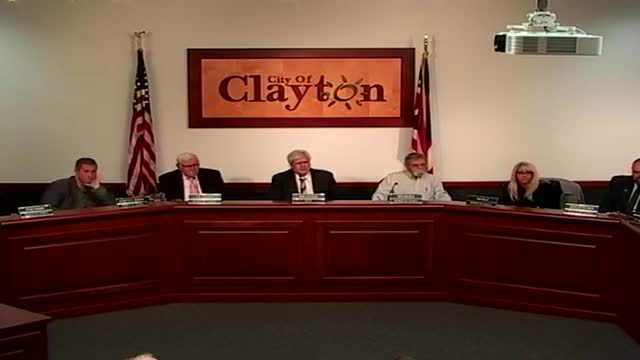Sam Cox addresses Clayton Council on Northmont School District's capacity concerns
March 08, 2025 | Clayton City Council, Clayton, Montgomery County, Ohio
This article was created by AI summarizing key points discussed. AI makes mistakes, so for full details and context, please refer to the video of the full meeting. Please report any errors so we can fix them. Report an error »

During the recent City Council meeting in Clayton, Ohio, significant concerns were raised regarding the impact of the proposed Warner Village development on local schools. Resident Sam Cox addressed the council, highlighting a recent presentation by the Northmont School District, which revealed that the average classroom size currently stands at 28 students—an issue the school board president deemed excessive.
Cox emphasized that the anticipated influx of 500 or more students from Warner Village could severely strain the district's already stretched resources and budget. He expressed skepticism about the city's assertion that the school district could accommodate this increase without negative consequences for educational quality.
A key point of contention discussed was the tax increment financing (TIF) associated with the Warner Village project. Cox pointed out that under this financing model, property tax revenues generated from the development would remain within the project area, meaning the broader city would not benefit from these funds. This raises concerns about the financial implications for the city and its ability to support essential services, including education.
The discussion reflects ongoing tensions between development initiatives and the capacity of local infrastructure, particularly in education. As the city moves forward with plans for Warner Village, residents are left questioning how these developments will affect their schools and community resources. The council's next steps will be crucial in addressing these concerns and ensuring that the needs of both current and future residents are met.
Cox emphasized that the anticipated influx of 500 or more students from Warner Village could severely strain the district's already stretched resources and budget. He expressed skepticism about the city's assertion that the school district could accommodate this increase without negative consequences for educational quality.
A key point of contention discussed was the tax increment financing (TIF) associated with the Warner Village project. Cox pointed out that under this financing model, property tax revenues generated from the development would remain within the project area, meaning the broader city would not benefit from these funds. This raises concerns about the financial implications for the city and its ability to support essential services, including education.
The discussion reflects ongoing tensions between development initiatives and the capacity of local infrastructure, particularly in education. As the city moves forward with plans for Warner Village, residents are left questioning how these developments will affect their schools and community resources. The council's next steps will be crucial in addressing these concerns and ensuring that the needs of both current and future residents are met.
View full meeting
This article is based on a recent meeting—watch the full video and explore the complete transcript for deeper insights into the discussion.
View full meeting
